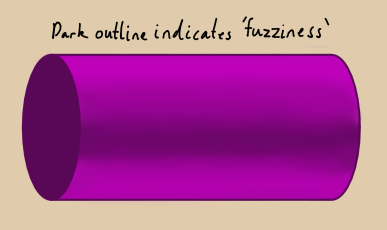More Practice With Light and Shadow
- seanmcgarry65
- Aug 4, 2023
- 2 min read
This week I continued practicing with how light interacts with drawn objects.
The drawing on the left illustrates how shadows for 3D drawings of objects are cast. Even if the top edge of an object casting a shadow isn't a perfectly rectangular shape, using a sort of 'lamp post' as a drawing guide, you can create a series of points that, when connected, show exactly where the object's shadow falls.
The drawing on the right shows how the same sphere under essentially the same lighting changes how it looks depending on the base color and level of shininess. A matte sphere with a dark base color has relatively low contrast between light and dark compared to the same sphere with a lighter color. When the sphere is shiny however, the reverse becomes true; light-colored sphere that is shiny has less contrast than a similarly shiny sphere that's a dark color.

The spheres on the left side of this picture show how spheres of different colors look under the same lighting conditions.
The diagram on the right illustrates why matte and shiny surfaces look different. Matte surfaces are rougher, so when light hits them, it scatters in wildly different directions based on where each individual ray hit the surface. Meanwhile, shiny objects have smoother surfaces, so when light hits them, rays that hit the same area tend to bounce in the same general direction.
As the caption on the left image indicates, the presences of a dark outline around a drawing of a 3D object indicates 'fuzziness'. Little projections (They could be hair, or tufts of felt, or anything else) block a small portion of the light near the very edge of the object, due to how close together they appear from that angle, even if they're relatively spread out.
The image on the right shows how you can use a sphere as a guide to coloring a highly irregular three dimensional shape. Each plane on the shape is roughly parallel to a spot on the sphere. By using your best guess as to which spot corresponds the best to each plane, you can use the color from that spot to fill in the corresponding plane of the object.
That's all I managed for this week. See you next time!











Comments